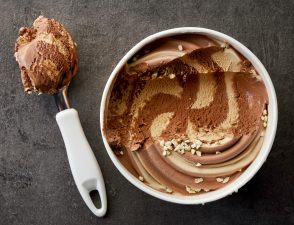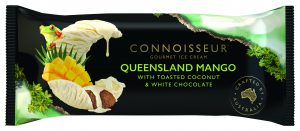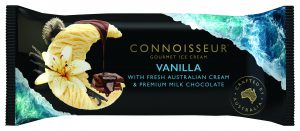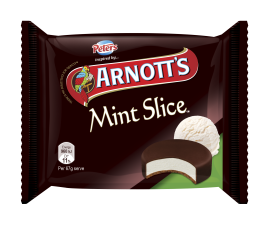
Cream the competition
Ice cream is typically seen as an ever-evolving channel as new flavours, textures, add-ins and trends dominate the market and sales.
As trends in ice cream come and go, sales in the category are constantly changing depending on a number of factors, including the prevailing level of New Product Development (NPD) offerings.
In 2016, ice cream was an underperforming channel across the C-store market with both dollar growth and volume growth falling into decline.
The Australasian Association of Convenience Stores (AACS) 2016 State of the Industry Report showed that the performance of ice cream singles was the main factor resulting in the contraction of ice cream in C-stores in 2016, while take-home ice cream was the main factor for growth in the segment.
AACS CEO Jeff Rogut pointed out that the ice-cream category had suffered due to a lack of NPD in the market over the past year.
Overall sales in the channel were salvaged by take-home tub ice cream and their offer of ‘premium indulgence’. Take-home ice cream sales saw an increase of 8.4%, while units rose by 15% in 2016.
Regardless, the ice-cream category remains an important category in the convenience channel: In 2016 C-stores held 23% of the value share of impulse ice cream sales, according to Euromonitor International.
Growth in the category
In late 2015, Streets launched new pricing for Cornetto, reducing the price of the single serve ice creams from $3.30 down to $2 each, a reduction of more than 30%.
Streets marketing director Anthony Toovey said the $2 pricetag was about unlocking growth for Cornetto and bringing new consumers to the category, through this ‘loose change’ offer.
“We believe that this initiative has the potential to significantly grow the ice cream category and reconnect consumers with ice cream on a more regular basis,” he said.
According to the AACS 2016 State of the Industry Report, there was a distinct divide in growth between the take home ice cream and ice cream single. Ice cream singles, despite accounting for over 70% of the market, posted a dollar value decline of -5.4%. A key factor in the declining value in the single-serving sub-category was a downturn for Streets Magnum, which suffered a double-digit decline in sales, heavily impacting performance overall.
Take-home ice cream accounted for the largest product segment within the frozen confection industry, as it is populated with low-value, high-volume products that are generally purchased at lower price points, Ibis World reported. Popular brands within the segment include Peters, Streets Blue Ribbon, and Bulla.
Significant growth was seen in the health-focussed trend of dairy-free ice creams being rolled out by niche brands. While sales might not be as high for dairy-free, Euromonitor acknowledged the space as a potential area for growth, as it provides an alternative to regular ice cream.

Trendy tubs
An expansion in premium offers and gourmet flavours contributed to a stronger eat-at-home trend. The AACS Report showed that the increase in take-home ice cream sales reflected the trend, for consumers to favour ice cream eaten at home in the evenings, and on occasions of sharing food with others.
A key driver for the take-home ice cream packs was the private label Gelato Fiasco, which is exclusively distributed through 7-Eleven. In addition to Gelato Fiasco, other brands in the gourmet and speciality sector of the channel saw an increase in sales, as the trend towards premium and indulgent forms of ice cream (the ‘premiumisation’ trend) resulted in an increase in the variety of flavours on offer.
Euromonitor predicted continued growth in the ice cream category, primarily driven by premiumisation. It also expected an increase in the number of small-sized tubs, which allow larger quantities of dairy ice cream to be sold through C-stores and independent retailers. Peters continues to create products that capitalise on the premiumisation trend, with upcoming NPD in the Connoisseur collection, which the company says will be available in the lead up to summer.
New additions to the range include two flavours inspired by the “Beauty of Australia”, including a vanilla variant made with Australian cream, and a Queensland Mango ice cream cloaked in white chocolate with a toasted coconut coating.
Peters convenience channel manager Ronan O’Connell said the campaign would introduce Australians to a high-quality, vanilla ice cream on a stick that the ice cream category has lacked.
“The campaign will capture the imagination of the indulgent ice cream consumer (the biggest segment in the ice cream space),” he said.
“There will be full Above-The-Line support starting mid-September and running through summer.”
 Creamy nostalgia
Creamy nostalgia
In a year that was alarmingly lacking in NPD, Streets found ‘Frozen’ success by collaborating with Disney to release a ‘Finding Dory’ frozen ice cream, inspired by the movie of the same title. Timed in conjunction with the release of the film, the vanilla and bubble-gum flavoured frozen treat continued to drive customers into C-stores, even until the end of winter.
In addition to the obvious appeal to children with the Finding Dory Ice Cream, Streets also decided to pay homage to adults and the young-at-heart, announcing the revival of an early 90s favourite, the Caramel Choc-Dip Paddle Pop. The limited-edition paddle pops were launched in March 2017, much to the excitement of fans who were children when the ice creams were first available for purchase.
Streets senior brand manager Scott Mingl said the company had been inundated with letters, calls and emails to bring back the favourite flavour.
“Paddle Pop resonates with so many Australians across young and older generations. Now Aussies have the chance to revisit their cherished memories of the brand and share them with even younger generations too,” he said.

Channel advantages
Convenience is the home turf of the impulse-driven ice-cream category. Peters’ Ronan O’Connell said customer’s purchase decision hierarchy, price is not usually in consideration when customers make the decision to buy such a treat, so tapping into the emotive and impulsive nature of the channel can deliver positive results.
“Consumption is driven by emotion, the occasion and new/different…We are cognisant that tapping into the emotive and impulsive nature of the channel will help return the category to growth,”
Customers attracted by outdoor advertising (or simply a hot day) can be driven towards the freezers using promotional tools and displays. Customers can be lured by capitalising on impulsive behaviours, and the prospect of an instantly gratifying purchase/consumption.
Driven by price and the joy of impulsivity, convenience shoppers are the ideal customer for the ice cream category. Shopper Tracker reported that ice cream is the number one category for shoppers who buy ‘because they feel like it’ and they can easily be persuaded to try new and high quality products; it is a category that thrives on innovation and the excitement of consumers.
Triggering consumption and impulse shopping trips can be assisted by in store signage, displays, promotions, to appeal to this unplanned mindset.

Whatever the weather
Although it is viewed as a seasonal product, Ice cream is sold and purchased all year round. Consumers eagerly await the bevy of new and exciting ice creams that hit the market each summer, so from a retailer’s point of view it is critical to make the most of this period with pre-release marketing and promotional activity to direct customers and make them aware of the new products.
Mr O’Connell said that Peters expects an excellent year ahead, with the brand set to release a record number of NPD offerings, including an innovative but underexplored product format to further drive excitement.
“The summer will start with two Australian food icons joining forces: Australia’s favourite ice cream, Peters, is teaming up with Australia’s favourite biscuit, Arnott’s, to create delicious ice cream sandwiches and tubs,” he said.
“This innovative sandwich format seeks to drive penetration by re-engaging with the lapsed ice cream consumer.
“We expect a strong trial so we recommend that all stores order up early to fully benefit from the launch.”
Advice for retailers
Taking note of the drop in single serve ice cream purchases, retailers should begin to prepare their strategies for the coming Australian summer months, as consumers start to seek a break from the heat with a cool, delicious ice cream, impulsively purchased from their nearest C-store.
Stores need to do all they can to prepare for the seasonal spike in demand. A yearly clean and defrost routine for freezers will ensure customers are not greeted with a clogged and unattractive ice-cream offer, ensure that all products are fully stocked, and keep reserves of the higher sellers available for quick re-stocking.
Key points for a convenience retailer from Peters
- Ensure NPD is ranged at launch: Traditionally NPD delivers best sales results in the first 13 weeks. Stock up early to benefit from exposure and trial to maximise sales.
- Ensure freezer is well planogrammed: A consumer spends less than a minute at the freezer on average, ensuring the freezer shelving is well planogrammed will allow shoppers to navigate it easily which is crucial for purchase conversion.
- Drive impulse behaviour through point of sale: If there is point of sale available, use it! It is the best means of engagement to drive your shoppers to the freezer.
- If you can utilise an off location freezer – do it: Off location freezers, act like ambient tower displays. They interrupt the customer on their journey through store and can drive sales.

